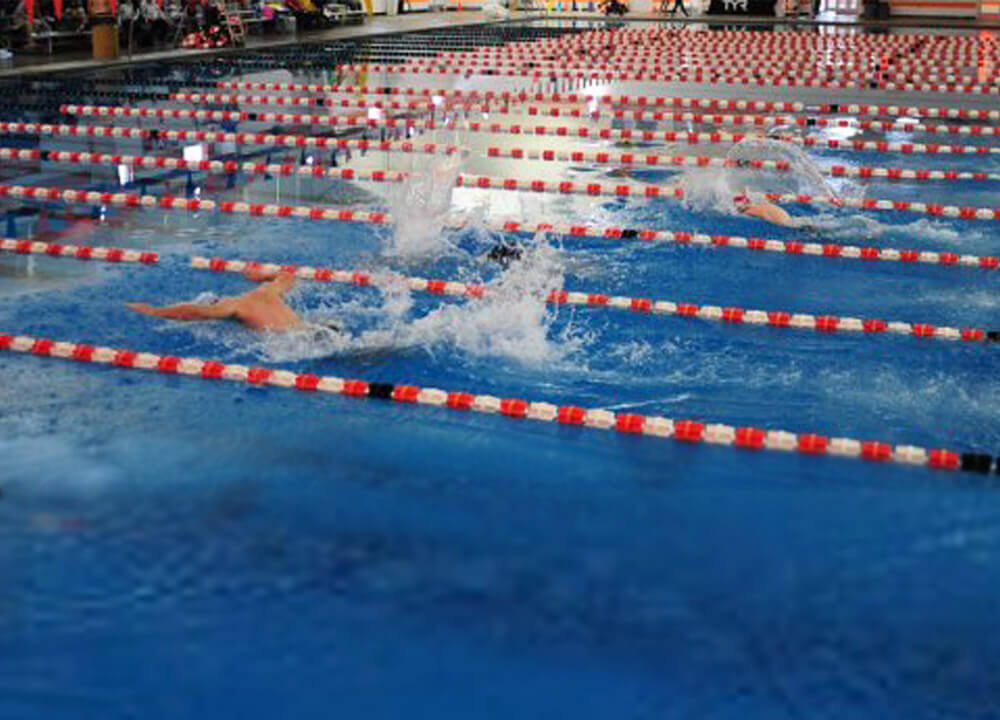As Cases Rise, Reminders on How to Maintain COVID-19 Safety Protocols In Practice

As Cases Rise, Reminders on How to Maintain COVID-19 Safety Protocols In Practice
By Madison Hoehn, Swimming World Intern
Swim teams around the world have all been struggling with one mutual obstacle: how to safely practice during the COVID-19 pandemic.
Whether it be age group, club, YMCA, college, or professional swimming, all coaches have had to make decisions about how practices will look from now on. Being safe and also being productive is a fine line that everyone is learning to navigate these days. So, how does a sport that depends on being able to hold one’s breath stay within the guidelines of wearing a mask and social distancing?
At first, it sounds like an impossible conundrum: swimmers maintaining safety guidelines while panting on the walls and sweating in the same pool. But, as we have seen over the past months, if the swimming community can do anything, it can certainly find a way to keep on practicing in less-than-ideal conditions.
Social Distancing
One of the easiest ways to maintain social distancing during practice is to limit the amount of people per lane. There are multiple methods for this. Some teams have discovered that having two people per lane, one on each wall, is the most effective way to keep athletes apart. This is very useful for any kind of fast swimming, like holding pace, as there are not a lot of waves to push past. This method also allows each swimmer to use training equipment, as they can keep it on their respective wall. However, this training can only be done if the team is small in number, or if it is divided into separate practice groups.
For those who have limited access to pool time during COVID-19, or a large team in general, it is recommended to use the no-touch method: swimmers never touch the wall at all and hold on to the lane rope when they stop. This keeps athletes spread out across the lane in a six-foot fashion. Although this might end up with some broken lane ropes and limit the use of equipment, this is a great way to keep multiple athletes in the lane apart from one another.
Wearing a Mask
Both coaches and athletes have to wear masks during practice, but for those who get in the water, this is definitely a problem. An easy fix to stay as safe as possible is to wear the mask right up until the dive in, and putting it back on immediately after getting out. However, no one wants a wet mask to put back on after practice, so bringing a Ziplock bag or Tupperware to store it in works great for keeping it dry!
Coaches, masks up at all times, please.
Deck Changing
One of the pinnacles of the sport is the unique skill swimmers have to “deck change.” That is, to be able to change into clothes or another suit under the towel without anyone noticing. For most teams, this is becoming a more frequent practice as locker rooms have limited access, or have been closed off to athletes completely. So, this may be a potential solution for those athletes who don’t want to drive home in their wet suits.
However, deck changing has been cracked down upon in recent years and may not be permitted in all pool areas. If this is true, then the good ‘ole parka-and-towel combo will just have to do!
Taking Temperatures
An easy way to keep athletes, coaches, and even lifeguards safe is to constantly check temperatures before practice. Although this is not a fool-proof tactic, this certainly can help eliminate anyone from training who might be contagious with COVID-19. Coaches, parents, or an athlete might help in the monitoring of temperatures before athletes can be let onto the pool deck. This is a simple way to keep track of who is most likely healthy, and who needs to go back home and try again in two weeks.
Although every team has to face these issues, there are multiple ways to handle them. Keep in mind that every athlete, coach, and program is very different, so catering to what works best for your team is what is most important – while staying safe, of course!




Romano Spica Vincenzo — Health Education mainly applied in the area of Sport and Physical Activity. (bio here — http://www.uniroma4.it/?q=node/1035 )
I find it completely ridiculous the no major aquatic facilities (or any for that matter – so far) have used any/all resources around them (I.E – Major University, Sci, Bio, Chem teams/groups, etc) to HELP with day-to-day testing of Pool Chemicals & pos/neg affects on Athletes.. Most (if not all Major facilities (even smaller ones) have a College/Testing facility close at hand… #TimeToOpenUp&MoveForwardWithTesting-InTheU.S.A
Most pools hold Chlorine levels 1.0 and 1.5 parts per million (some as high as 3.0) to maintain a healthy pool. Also please consider other factors – Age of Facility, HVAC systems, Bather load Type Chlorine/Ozone, Indoor/Outdoor, Quality of the Water ( Let’s be honest on this one SOME areas U.S. / Internationally have better quality water). The other concern/Issue I have is the “Specialist” used has NOT been involved with anything water related since 2017 – Bio here http://www.uniroma4.it/?q=node/1035 Not knocking his skill set BUT he from Rome so I feel many folks would like to see U.S. Testing 1st before pool closures (IMO)…
Very well written and definitely a timely article!